Milling Station – MF-400 CNC for post-processing Krah products
Many customers of theKrah GmbH have a demand for post-processing of their produced pipes, for example to build manholes, tanks, branches or house connections. The existing milling station MF-200 provides an inexpensive possibility to this issue but is restricted in terms of flexibility and efficiency.
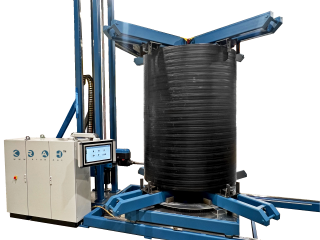
This leads to a novel development of the Krah GmbH, the new MF-400 CNC, which represents a fully automated and numerically controlled milling station for large dimensional pipes made of plastic.
Objectives
Within the development process of the new milling station the following issues were considered:
- High flexibility
- Fully automated milling process
- Easy handling
- High efficiency
- Reduced demand on production space
- High cost-effectiveness
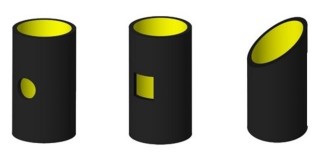
Realization
In this section, we demonstrate the realization of the goals defined before in the objectives.
Cut outs and possibilities
In a first version, a selection of three object types shown in Figure 1 is implemented. These objects are circular holes as standard for conventional machines, rectangular holes which are pertinent for some special applications and straight cuts used for numerous important applications. All object types can be processed in a centric as well as an eccentric position on the pipe up to a height of 3,500mm. Moreover, support structures can be created to prevent damage on the machine due to extracted cut outs and to preserve the stability of the pipe during the milling process. Note that many object types for new applications can be implemented flexibly without changing any components of the hardware.
Multi object mode
A fully numerically controlled and automated production scheme including six axes along with intelligent milling software allows for an efficient processing of an arbitrary number of objects within the multi object mode and without the need of any human support. Figure 2 shows the definition of objects on the machine panel and the processed pipe.
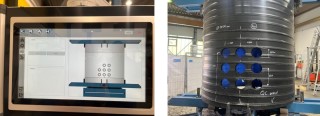
Intuitive user interface
A very important issue within the development process represents the design of the user interface to make the handling of the milling station as easy as possible for the operator. To achieve this goal several smart features are implemented like an automatic determination of the pipe diameter and the object position, a copy to backside option and a preview option for objects or an automatic calculation of the optimal milling tool and optimal trolley position. In Figure 3, corresponding pages of the machine panel are shown to define and check parameters of the pipe and related objects, respectively. Moreover, two configuration pages are shown which provide intelligent support for setting up the machine. This intuitive implementation of the user interface allows for the usage of low-skilled and non-technical staff on the machine.
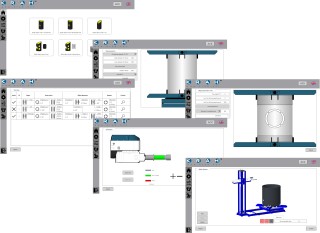
Machine concept
The concept of conventional machines is based on a translational movement of the pipe which leads to a production space with a width higher than twice the pipe diameter, see Figure 4 (left). In contrast, the concept of the new MF-400 CNC milling station is based on a rotational movement such that the production space can be halved, see Figure 4 (right).
To be specific, the production space required for pipes with different diameters is given as follows:
- from DN/ID 600mm up to DN/ID 3000mm: 7900mm x 3800mm
- from DN/ID 3,000mm up to DN/ID 4000mm: 8600mm x 5200mm
This reduced demand for production space represents a further great benefit of the new milling station.
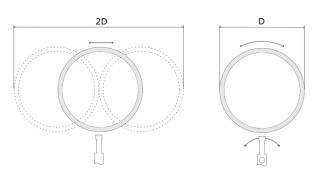

The MF-400 CNC milling station provides a combination of functionality of a conventional milling station like the MF-200 or any similar machine and a saw as shown for example in Figure 5 (middle). This allows us not only to considerably reduce acquisition costs, but also the production space as well as the production time, since it is not necessary to set up a further machine.
Within the development process all defined goals were successfully implemented. That has resulted into a novel and superior milling station for the processing of large dimensional pipes made of plastic.
